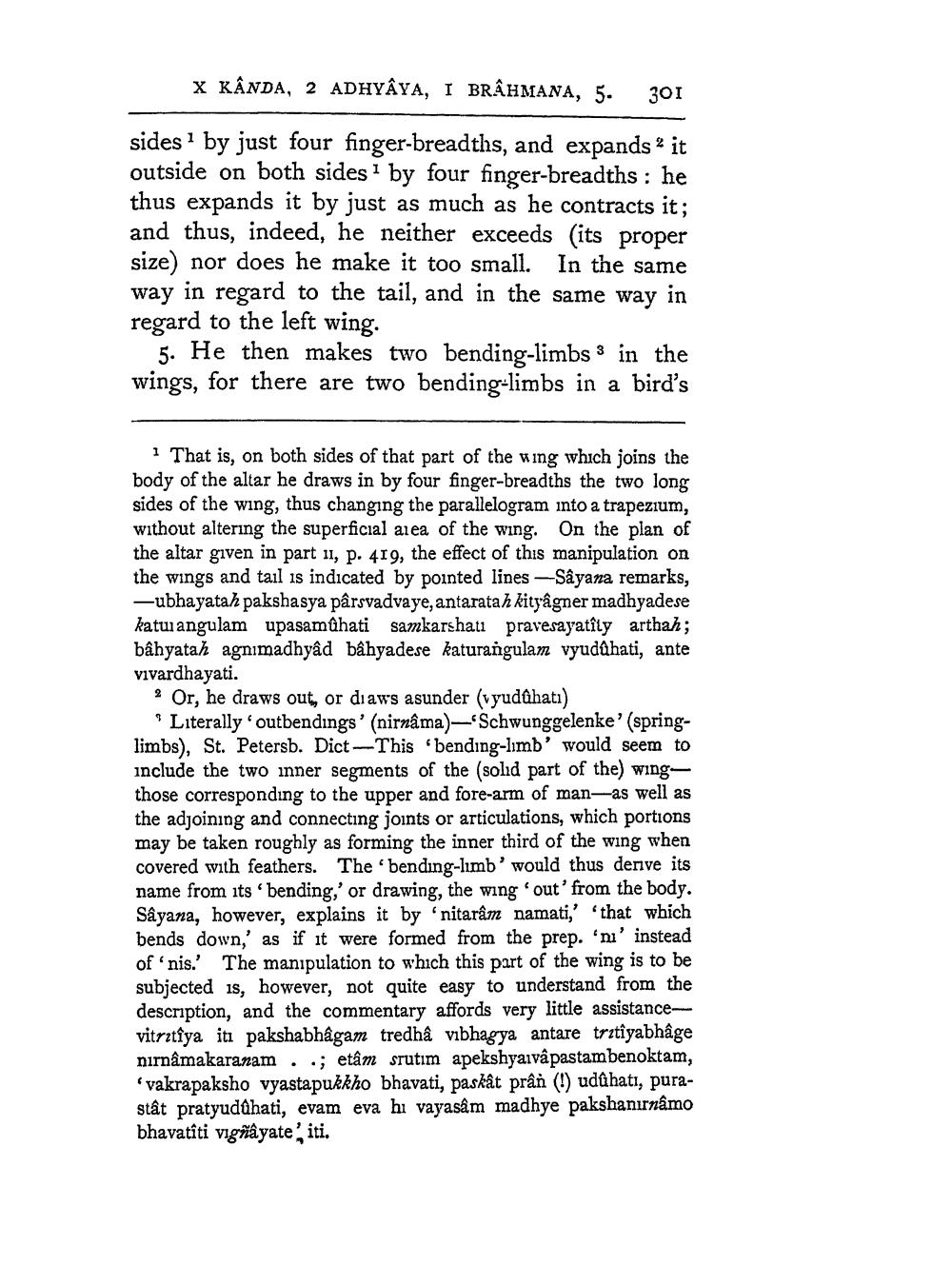________________
X KÂNDA, 2 ADHYÂYA, I BRAHMANA, 5.
301
sides 1 by just four finger-breadths, and expands ? it outside on both sides 1 by four finger-breadths : he thus expands it by just as much as he contracts it; and thus, indeed, he neither exceeds (its proper size) nor does he make it too small. In the same way in regard to the tail, and in the same way in regard to the left wing.
5. He then makes two bending-limbs 3 in the wings, for there are two bending-limbs in a bird's
1 That is, on both sides of that part of the wing which joins the body of the altar he draws in by four finger-breadths the two long sides of the wing, thus changing the parallelogram into a trapezium, without altering the superficial area of the wing. On the plan of the altar given in part 11, p. 419, the effect of this manipulation on the wings and tail is indicated by pointed lines-Sâyana remarks, —ubhayatah pakshasya pârsvadvaye, antarata h kityâgner madhyadese katui angulam upasamûhati samkarshati pravesayatîly arthah; bahyatah agnimadhyâd bahyadese katurangulam vyudhati, ante vivardhayati. ? Or, he draws out, or diaws asunder (vyudhhatı)
Literally 'outbendings' (nirnama)— Schwunggelenke' (springlimbs), St. Petersb. Dict-This bending-limb' would seem to include the two inner segments of the (solid part of the) wingthose corresponding to the upper and fore-arm of man-as well as the adjoining and connecting joints or articulations, which portions may be taken roughly as forming the inner third of the wing when covered with feathers. The 'bending-limb' would thus derive its name from its bending,' or drawing, the wing 'out' from the body. Sâyana, however, explains it by 'nitarâm namati,' that which bends down,' as if it were formed from the prep. 'ni' instead of nis.' The manipulation to which this part of the wing is to be subjected is, however, not quite easy to understand from the description, and the commentary affords very little assistance vitritîya iti pakshabhagam tredhâ vibhagya antare tritîyabhâge nirnâmakaranam ..; etâm srutim apekshya vâpastambenoktam,
vakrapaksho vyastapukkho bhavati, paskât prân (!) uduhati, purastât pratyuddhati, evam eva hi vayasâm madhye pakshanırnamo bhavatîti vigñâyate iti.




